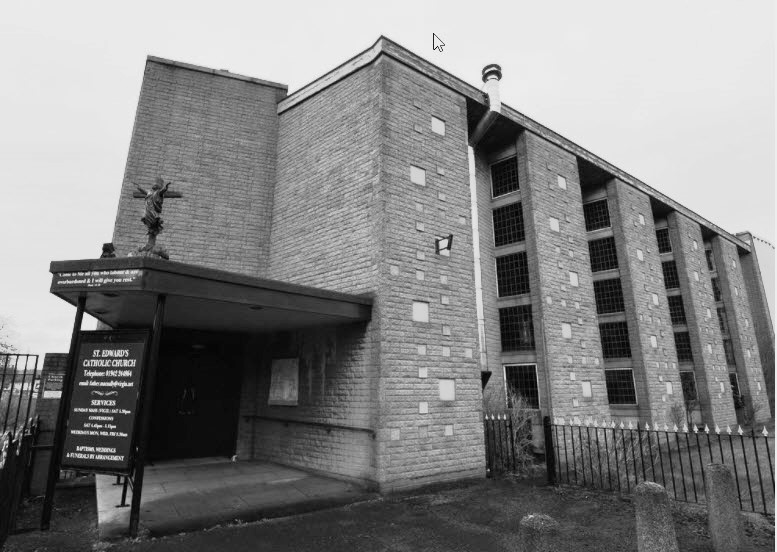Church of St Edward the Confessor
Scot Lane, Newtown., Wigan
Part of Group:
At Risk: No
Description
Demolished - Feb 2021
Description
A granite church built in the 1960s on a longitudinal plan, influenced by Sir Basil Spence’s Coventry Cathedral, with staggered side elevations producing a ‘saw-toothed’ effect. Glass and light lend the interior its quality.
History
The parish was established in 1927 and the first church a converted public house, a use to which it subsequently reverted before being recently demolished. The present church was built at a cost of £44,000 and was opened by Archbishop Beck on 15 August, the feast of the Assumption, 1965. The architects are said in the Directory to have been Douglas J. Olivery (Oliver?) & Rigby.
In 2002 a fire caused extensive damage to the interior, particularly in the narthex area.
Description
The church is built on a longitudinal plan, and is clearly influenced by Basil Spence’s Coventry Cathedral, its staggered side elevations with the nave walls canted outwards producing a ‘saw-toothed’ effect, with windows on the (liturgical) west-facing returns. The north and south sides of the chancel are lit by large windows with coloured lights and a grid of concrete mullions and transoms. Similarly, the west wall is more glass than wall. Otherwise, the walls are clad with rock-faced granite, apart from the east wall of the nave, which is faced with concrete panels (and has framed rood figures fixed to it). The entrance is at the west end, in a re-entrant between the wide nave and the narrower west end narthex/gallery area.
Inside, the narthex and gallery were rebuilt after the fire. They lead into the main nave, a large and well-lit space without aisles. This is side-lit by coloured glass (French?) in the saw-tooth bays. There is a wide-span roof of shallow pitch, and the walls are rendered and painted white. Spacious sanctuary area raised on steps, with ample side light, altar and ambo of Wicklow granite, timber slatted reredos in recess against east wall.
To the north is a link to the presbytery, in which has been formed a weekday chapel. This is dedicated to The English Martyrs and St George. In the west window a large St George’s flag has been worked into the design of the post-fire window.
Source: TakingStock




